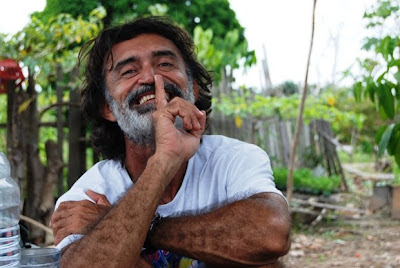
UK could cut Amazon soy imports with home-grown peas and beans
Ecologist
21st July, 2010
A solution to the livestock sector's reliance on soy animal feed, which is driving deforestation in Argentina and Brazil, could be found by incentivising home-grown alternatives
The UK could cut its dependency on imported soy in half by encouraging farmers to switch to home-grown alternative protein crops like oilseed rape meal, lupin, sunflower, linseed, beans and peas.
More than one million tonnes of soy is imported every year to feed animals in the pig, poultry and dairy sectors with 98 per cent of this coming from South America - where studies have linked the expanding number of soy plantations to deforestation in the Amazon rainforest - as well as the grassland regions of the Brazilian Cerrado, the Atlantic forest and the Chacos region.
However, an analysis by the Royal Agricultural College (RAC), commissioned by Friends of the Earth, estimated that replacing 50 per cent of imported soy with home-grown alternatives would be 'relatively straightforward' and require around 8 per cent of the currently available arable land.
Grass-fed alternatives
The RAC says extensive livestock systems used to rear cows and sheep could easily switch to higher proportions of forage and silage feed. It may be harder, says the RAC, to cut out soy imports in the intensive chicken and pig sectors but that a 'major reduction' was achievable by mixing soy with UK-grown alternatives, high in protein, such as field beans and peas.
In interviews with the feed industry and farming sector, the RAC found that the main obstacles were the lack of incentives to grow alternative crops and the relatively low price of imported soy. Advice to farmers on growing or mixing alternative feeds was also poor, while feed suppliers said a variety of feed crops would complicate the supply chain, since additional storage would be required for a mix of crops.
Soy-free labelling
Friends of the Earth said funds from the Common Agricultural Programme (CAP) should be used to incentivise farmers to grow alternative protein crops and reduce the growing dependence on imports. It also urged retailers to publicise and label soy-free meat and dairy produce to consumers.
'Many people choose British milk and meat without realising that the animals in our farms munch on feed produced by destroying wildlife and rainforests in South America.
'Animals should be born, bred and fed British – but pressure from supermarkets and biased EU subsidies force farmers to rely on damaging imports,' said senior food campaigner Sandra Bell.


































